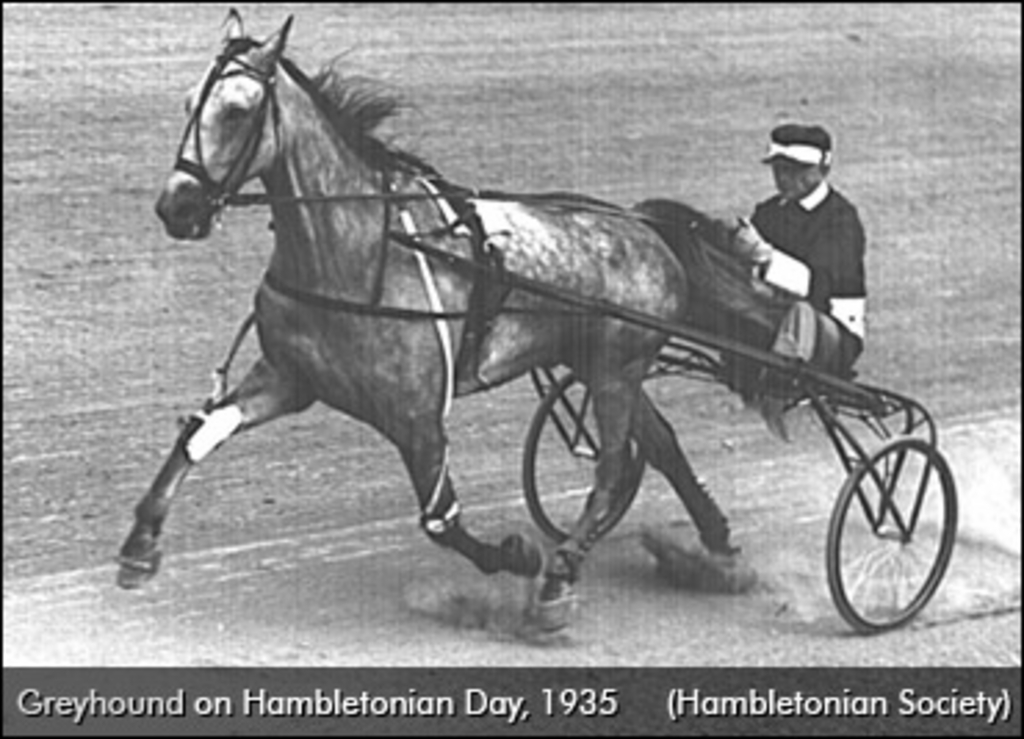
 In this week's edition of Rewind, Robert Smith recalls the early history of the annual classic known as the Hambletonian as well as the 1935 Hambo and its still beloved and famous winner. Despite the passage of so much time, the memory of the great trotter Greyhound remains almost a household name.
In this week's edition of Rewind, Robert Smith recalls the early history of the annual classic known as the Hambletonian as well as the 1935 Hambo and its still beloved and famous winner. Despite the passage of so much time, the memory of the great trotter Greyhound remains almost a household name.
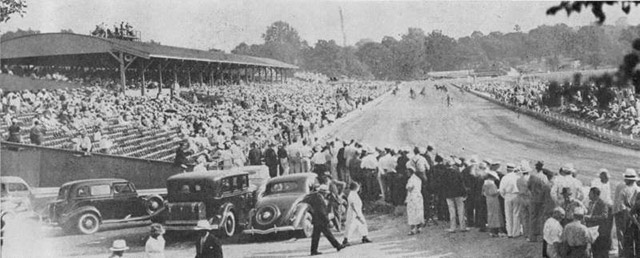
Hambletonian Day at Goshen, New York as seen from the first turn. Each year many pictures were taken from here (Hambletonian Society)
When the trotters parade postward later today for this year's renewal of The Hambletonian it will mark the 90th time this great race has been held. It was first staged in 1926 as part of the New York State Fair held at Syracuse, N.Y. The inaugural event attracted a field of 14 starters that all went two heats to decide a winner. The honour of winning the first staging of this now legendary race went to a colt named Guy McKinney. Racing for an incredible purse of $73,451.32 owner Henry B Rea went back to his Pittsburg home almost $ 46,000 richer for his efforts. One of the great reinsmen of the day, Canadian Nat Ray (originally from Toronto) was the driver. Finishing second in both heats was Guy Dean owned by the Montour Farm and handled by Walter Cox. Both were by the same sire, Guy Axworthy.
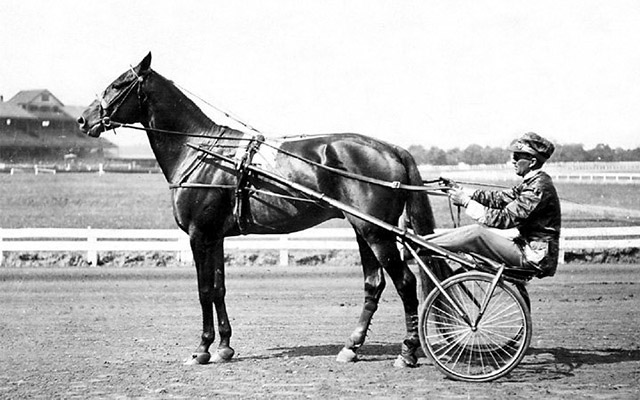
Pictured is Guy McKinney and driver Nat Ray winner of the 1926 Hambletonian (Hambletonian Society)
The race was some time in the making as all great ventures are. The original promoter of this event was a Chicago businessman named Harry O. Reno. Just a few years prior to this in 1920 he purchased his first horse, perhaps through the urging of his brother-in-law William Monroe Wright, who owned the then-famous Calumet Farm. Within a very short time he had drawn the attention of many in the sport, thanks to his energetic promotional efforts.
Late in 1923, Reno began to seriously formulate his idea for a great trotting race, one that would elevate harness racing to rival other major sports. Although he personally was said to prefer pacers, he set about establishing this event solely for the trotting gait. Many but not all were soundly behind his idea. Walter Candler, owner of the Lullwater Farm in Atlanta, Ga., immediately went out and purchased 19 trotting-bred yearlings! They were all by the same sire, Peter The Great.
Reno forged ahead with his plan and soon began to take out ads and promote his great plan. Entry blanks were mailed out on April 4, 1924 and the first responder was George W. Boyton of Aurora, Ill. He nominated a filly named Miss King Peter, a handsome trotting-bred bay yearling filly. Mr. Boyton was President of the Aurora Woolen Mills, producers of horse blankets. The Association had estimated that 400 yearlings would be named by the May 1, 1924 deadline to be a possible part of history. Actually 624 entries were received from 30 States and two Canadian Provinces. Leading the way was Walnut Hall Farm with 68 nominations.
Several locations were considered and when the promoters at Syracuse offered a bid of $8,000 (much more was anticipated), the race's site was chosen over Kalamazoo, Mich. and Atlanta, Ga. There seemed to be no question about the naming of this event. A statement at the time read "No better one could have been chosen than Hambletonian, the great father and real founder of the modern standardbred."
Greyhound Wins The 1935 Hambletonian
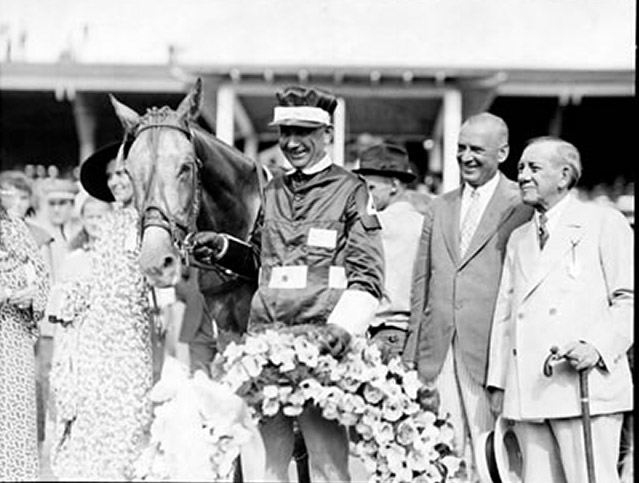
Greyhound and his connections after winning the 1935 Hambletonian (Hambletonian Society)
The 1935 Hambletonian was held on Wednesday, August 14 at Good Time Park in Goshen, N.Y. From an original list of 325 nominations who paid the initial $10 fee, a field of just eight hopefuls answered the starter's call. Tough economic times had caused a huge reduction in the purse money and this year's big race went for just $33,321, a far cry from the inaugural. In fact it would take until 1950 before the purse would equal the one offered for the very first race.
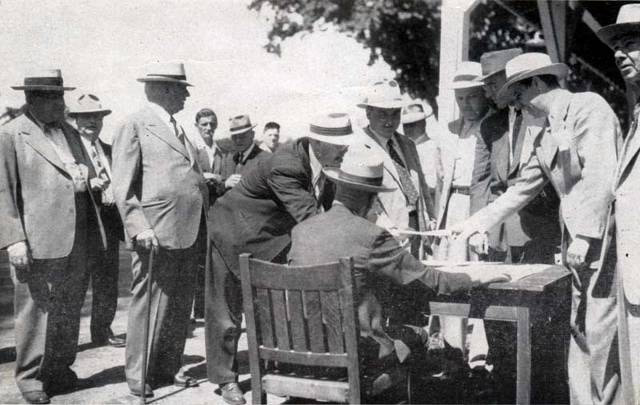
A view of the draw for post positions at Goshen's Good Time Park (Hambletonian Society)
Good Time Park had become the new home of the Hambletonian in 1930 when officials at Syracuse no longer cared to host the race there. Although an overnight rain had caused some minor concerns, the morning dawned as a 'postcard' day for the 10th renewal. Despite the fact there was no par-mutuel betting, Greyhound was the heavy favourite in the auction pools. Always a huge draw at the gate, this year was no exception and the crowd was estimated to be nearly 40,000 strong.
Greyhound despite his near flawless performances throughout his racing career was not a good "leaver" and in fact invariably left the post at a leisurely pace (actually trot) and whatever his position, usually faded well back at the start. Hambletonian day was no different and in both heats the great grey warrior had to come from well back to earn a trip to victory lane.
In the opener following a quarter in 31 3/4, Greyhound trailed the field. By the half he had moved up to fifth spot and continued to advance. By the 3/4 pole he had everyone beaten but the filly Tilly Tonka. At the head of the stretch he passed her and trotted home in 2:02 1/4 with a final recorded half in :59 1/2 which meant that he had undoubtedly trotted around 58 seconds. In the second heat several horses broke stride as they left the post, leaving only Greyhound and one other entrant -- Warwell Worthy -- still on gait. Again Greyhound lagged well behind and prior to the half trailed by some 15 lengths. From here he made up ground and by the 3/4 pole he lead the field, finishing some 5 lengths ahead of his closest competitor.
The horse's owner, a jubilant E.J. Baker was called to the stand and presented with the Hambletonian trophy. A press report stated "the cameras clicked from all points of vantage and the 1935 Hambo, most valuable and colorful of harness racing events was a part of history." Well known even before this victory, Greyhound was steadily in the headlines from that day onward. He became the first gelding to win the Hambletonian and also the only grey-coated horse to ever win the annual classic.
Indicative of the trotting economy of the time, Greyhound earned $38,952 in seven years of racing (1934-1940), earning almost half ($18,804) in the Hambletonian.
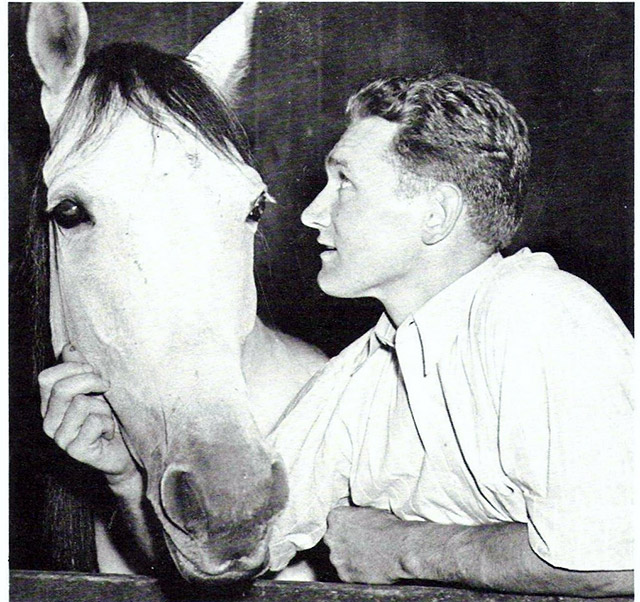
Greyhound and his groom and constant companion Jimmy Wingfield. This pair were almost inseparable throughout the horse's seven-year racing career.
The Hambletonian has been held at several locations as listed below:
-
1926 and 1928 -- New York State Fair, Syracuse, N.Y.
-
1927 and 1929 -- held in Lexington, Ky. due to rainouts in Syracuse
-
1930-56 -- Good Time Park, Goshen, N.Y. (site of the Harness Racing Museum & Hall of Fame)
-
1943 -- held at Empire City Park in Yonkers, N.Y. due to wartime gas rationing
-
1957-80 -- DuQuoin State Fair, DuQuoin, Ill.
-
1981 - present day -- The Meadowlands, East Rutherford, N.J.
The race has been held at the fabulous Meadowlands in New Jersey since 1981 and continues to be contested there today.

